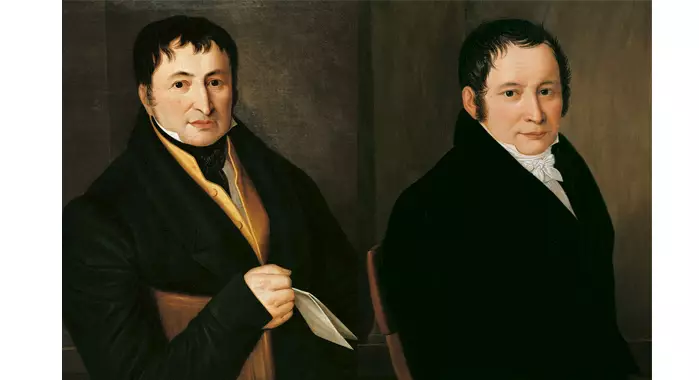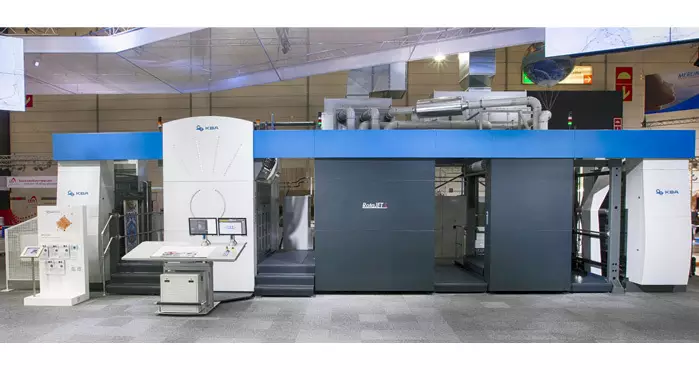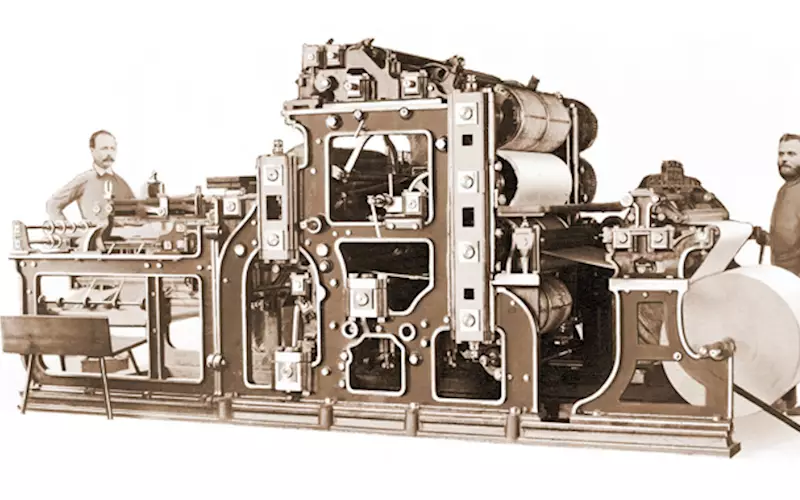KBA: Two hundred years of print innovation
A quiz compiled by Rahul Kumar about the world’s second-largest press maker with a 2017 revenue of almost 1.2 billion dollars.
29 Mar 2017 | By Rahul Kumar
Question 1. When and where was KBA set up?
Answer: The company was set up in August 1817 in Würzburg, Germany.
Question 2: Did you know the first KBA press, the first steam-driven cylinder newspaper press, was built by two Germans, Friedrich Koenig and Andreas Bauer who went on to found the business. Who were the clients?
Answer: The Times in London in 1814.
Question 3: In 1817, Friedrich Koenig and Andreas Bauer decided to form their own company in Germany, which is what the company is celebrating this year. Where did they set up the business?
Answer: Friedrich Koenig set up the business in a former monastery in Oberzell, near Würzburg in Bavaria, where Andreas Bauer joined him in 1818 after completing refinements to the Times press. It took a while to get started, but by 1822 the company had sold the first Koenig & Bauer press to Johann Spencer in Berlin, soon to be joined by three more.

Friedrich Koenig and Andreas Bauer
Question 4: On 25 January 1823 the Haude & Spencersch Zeitung was the first newspaper in Germany to do what?
Answer: It was the first newspaper to be printed on Koenig & Bauer cylinder presses on the European continent.
Question 5: Gravure was also a strong area for KBA. When did it develop its first rotary gravure press?
Answer: 1912. This was followed by a sheetfed gravure press in 1936.
Question 6: KBA-NotaSys in Würzburg makes banknote presses that are used worldwide, but like any security printing operation it doesn’t talk much. What happened in 1923?
Answer: The company developed its first coloured banknote press in 1923, then a multi-colour intaglio press in 1952.
Question 7: Friedrich Koenig died in 1833, but by then the Koenig & Bauer company was well established and his sons Wilhelm and Friedrich jun. carried on with the business. Andreas Bauer lived until 1860. In 1875 what did Friedrich Koenig oversee the development of?
Answer: He had overseen the development of a web-fed rotary letterpress machine, which was sold to Magdeburger Zeitung the following year. Over the next 15 years the concept was refined for multiple page formats and twin tower units.

Koenig & Bauer
Question 8: By the 1960s it was obvious that offset would overtake letterpress and a major milestone came in 1967. What was it?
Answer: It was the launch of the first sheetfed offset press, the Rapida 0. By 1974 the Rapida SR III was hitting 15,000sph, the fastest in the world at the time and still respectable today.
Question 9: In the 1980s it looked as if flexography was a good alternative to web offset. How so?
Answer: Associated Newspapers put in eight flexo Courier newspaper presses in 1988.
Question 10: What newspaper system was introduced in 2000?
Answer: The firm, now known as KBA, introduced the Cortina waterless web offset newspaper press, a system that proved very successful and is still build today.

Waterless newspaper press Cortina launched at Drupa 2000
Question 11: Würzburg remains the group’s HQ. Where does it have its other sites and factories?
Answer: Most of the subsidiary companies are in Germany, but it has production facilities in Austria, Czech Republic, Italy, and Spain plus large sales and a service centres in the US and China and sales and service subsidiaries on all continents wirh the exception of Africa.
Question 12: KBA’s Indian representative Indo Polygraph Machinery was in the news during Drupa 2016. Why?
Answer: They sold six machines at Drupa 2016. The packaging giant TCPL, consolidated its trust in KBA by sealing a big-ticket deal for three new KBA machines during the show. The latest KBA at Silvasa factory is a long press with 11 units which includes a printing unit after the coater. This is the first press in this configuration from KBA in whole of Asia.
Question 13: What is unique about the PrintWeek India Newspaper of the Year 2016, Divya Bhaskar?
Answer: Divya Bhaskar is printed on a KBA Prisma DWDC press with nine towers and three folders. The newspaper is printed on Panasia 48.8 gsm in CYMK. For the 26 January 2016 issue which won the award, the layout was specially designed for the occasion of Republic Day. The issue showcased two mastheads and each page of the issue had a touch of the three colours of the national flag. A total of 335,000 copies were printed for the Ahmedabad edition.
Question 14: KBA has a digital project in the RotaJet L, a very flexible inkjet web press with web widths from 770 to 1,380 mm, and the RotaJet VL with a web width up to 2,250 mm for industrial print such as decor. Recently it has entered into an alliance with two majors? What are these?
Answer: HP and Xerox. The alliance with HP has led to the 2.8m wide PageWide Web Press HP T1100S for corrugated pre-prints. It’s the biggest inkjet web press in the world, assembled at the KBA factory in Würzburg. While the alliance with Xerox has led to the development of the VariJet 106, a modular hybrid B1 sheetfed press that can be configured with offset, inkjet, screen, coating, foiling and die-cutting units inline.

RotaJet L at Drupa 2016
Question 15: As one of the first powered press makers in Germany, Koenig & Bauer was the training ground for a lot of press engineers, some of whom left to found their own companies. Which are the two notables ones?
Answer: Heidelberg and Manroland. In 1890, Andreas Hamm (a bell-caster who had set up a foundry in 1850) who went to making presses along with his son Karl. When Andreas died in 1894, Karl sold the business to Wilhelm Müller in Heidelberg, who called it Schnellpressenfabrik AG Heidelberg. Today the full name is Heidelberger Druckmaschinen, but mostly known as Heidelberg. Manroland also has roots linked to Koenig. In 1844, a nephew of Friedrich Koenig, Carl August Reichenbach, together with Carl Buz, established the Reichenbach’sche Maschinenfabrik in Augsburg.
After going through a series of ever more complex Germanic company names, in 1909 it was simplified to Maschinenfabrik Augsburg-Nürnberg AG, or MAN AG for short. In 1979 it merged with Roland, yet another German press maker, to become MAN Roland, today operating as two separate companies again, Manroland Web Systems (in Augsburg) and Manroland Sheetfed (in Offenbach but UK owned).

Rapida 106 sheetfed press














 See All
See All